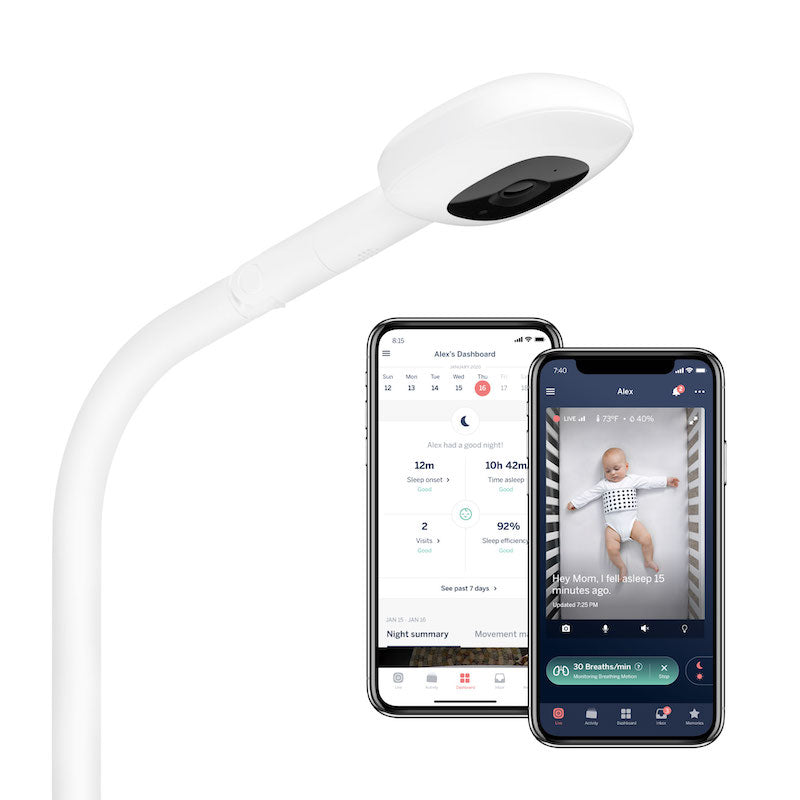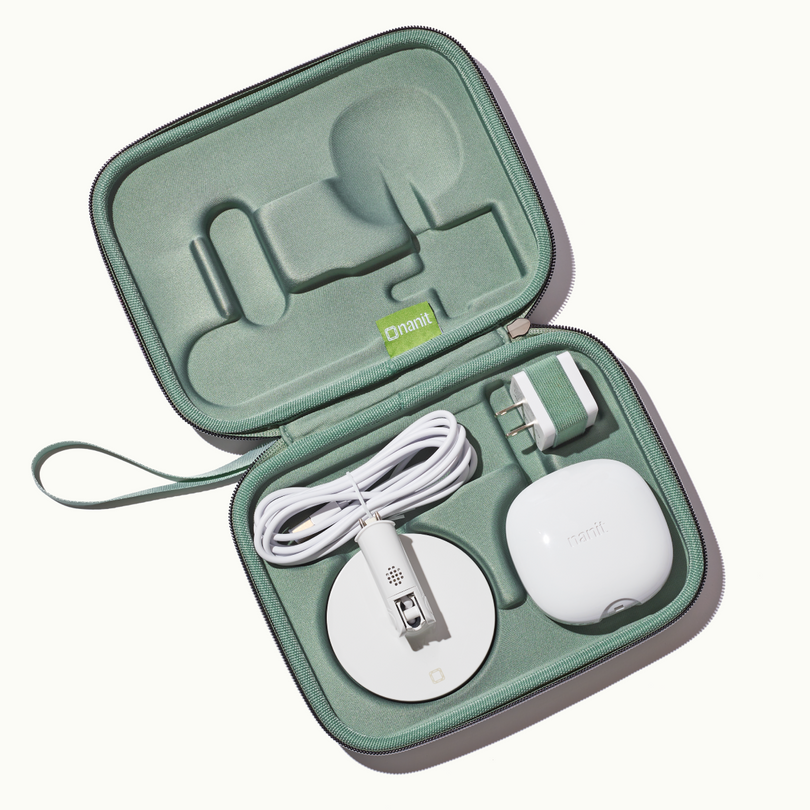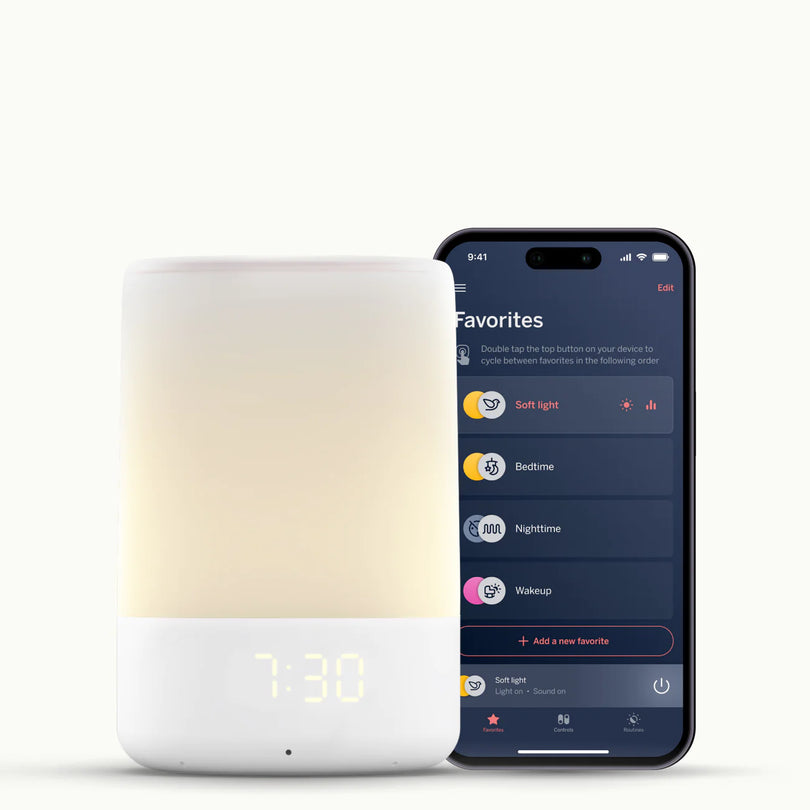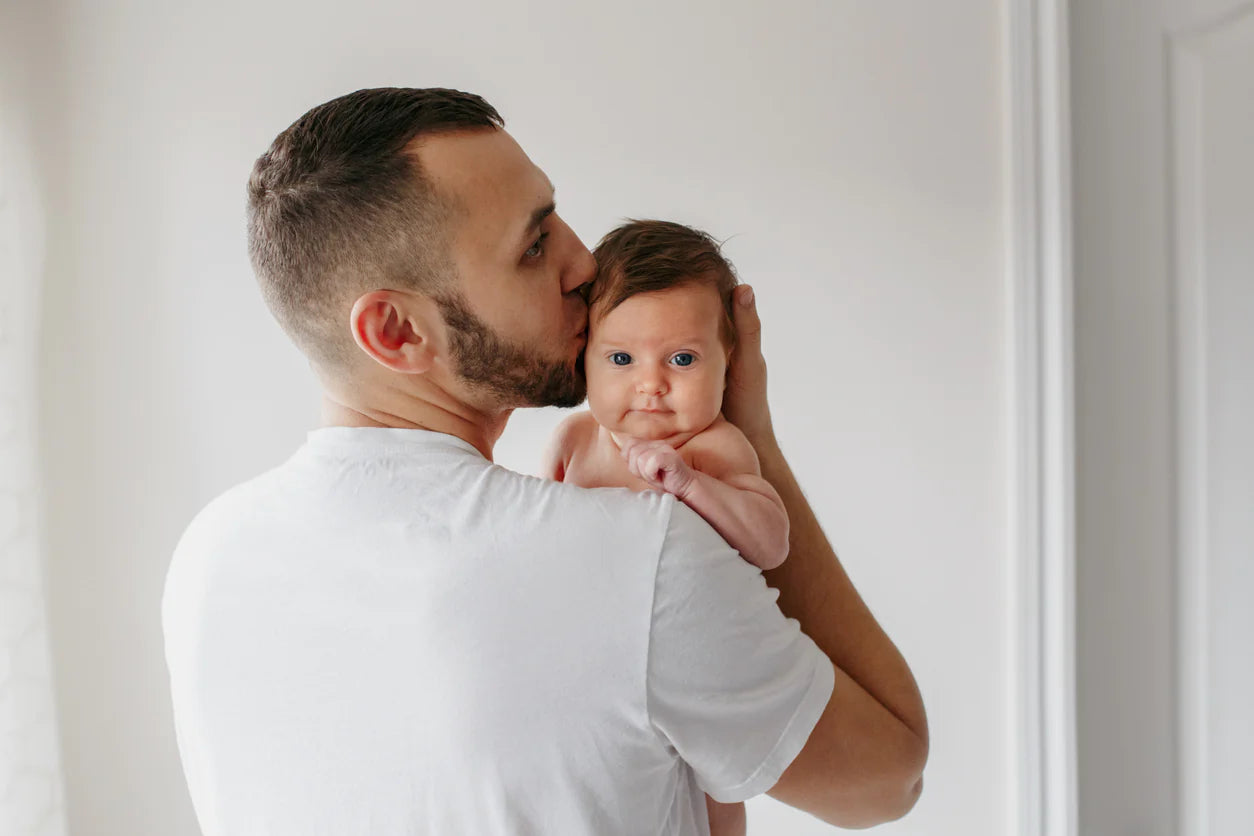6 Month Old Nap Schedule:
Although your baby’s naptimes will fluctuate between 4 and 6 months, they’ll likely be consistently logging 2 to 4 hours of total sleep during the day. It’s common for a 4-5 month old baby to have 3 naps each day, while a 6 month old will likely have 2 longer naps each day. At this age, it is now appropriate to begin sleep training, if you so desire. To do this, put your baby down to sleep when they’re showing signs of sleepiness, but are not yet asleep. Don’t be surprised if you hear some tears, as your baby may struggle as they learn to sleep without your presence. Give them some time, then come back in to check on them, and confirm that they’ve found sleep. It’s crucial during sleep training for your baby to be put to bed in a crib, instead of your bed, or a bedside bassinet, so your 6 month old baby can have the space to move around and explore their sleeping environment. This transition can be tricky for both of you, but with time your baby will become comfortable with this new sleeping arrangement, and both of you will gain some autonomy. Now is also the time to remove movement from naps. So, while naps in the car and stroller may still be inevitable it’s important to strive to have your baby’s naps occur in their crib. The crib should be a quiet, safe, and cozy space for baby to recharge.
6 Month Old Feeding Schedule:
Creating a reliable sleep/eat/wake routine adds stability in your little one’s life by helping them know when to expect food, sleep, and play time. A full night of sleep, which consists of 11-12 hours of sleep for a baby this age, should now be the norm. And, this full night of sleep should also be occurring with few nighttime feedings. To help baby achieve this full night of sleep, without needing to wake to feed, ensure they’re receiving a minimum of 24 ounces of nourishment daily, with 5-8 ounces in each feeding. For exclusively breastfed babies, you can ensure they’re receiving enough by feeding them at least 5 times a day for 15-20 minutes. If you’re uncertain about the amount of milk your baby is receiving in each feeding, you can check the amount of milk you produce while pumping. If you’re wondering when your baby can start eating solids, The American Academy of Pediatrics (AAP) recommends baby only consume breast milk, or formula, for the first 4-6 months. So if they haven’t started solids yet, now is the time to start.
How Long Should A 6 Month Old Sleep?
Now is the time to create a sleep schedule and make sure everyone in your baby’s life honors this sleep schedule. The major shifts in their sleep habits will be that they’re sleeping for longer periods during the day and night. This shift helps minimize baby’s confusion between day and night. With their naps and sleep throughout the night, your baby will likely now be sleeping 14 to 16 hours a day. In addition to a sleep schedule, it’s important that (if you haven’t already) you begin practicing a bedtime routine with your child. You can create this routine by trying out various calming activities, like reading a book or singing a song, then sticking with the activities that do the best job at settling both you and baby – because hey, you also deserve some relaxation! Allow plenty of time for this routine and make sure to remove any distracting objects from baby’s crib before laying them down for bed.
6 Month Sleep Schedule
Wake and Milk Feed6:30 AM |
This first feed of the day might be bigger, depending on when you last fed your little one. If you're baby is not really hungry, this might be a sign to cut back on nighttime feeds. For those breastfeeding, you'll probably be very full in the morning, particularly after a long stretch of rest and not feeding. You may want to pump off extra milk to store for later, after you've fed your baby. |
Nap time8:30 - 9:30 AM |
You deserve a break, and this nap is a perfect time to take one. Grab yourself a coffee, take a shower, Netflix perhaps? Indulge in some you time. |
Milk Feed9:30 AM |
Time for food! Your baby may not be awake for another half an hour, and they'll be hungry. |
Nap time11:30 - 12:30 PM |
If your baby has started eating solid foods, maybe offer a small lunch before another nap. Let the little one sleep another 30 minutes if they don't wake up on their own. |
Milk Feed12:30 PM |
Time to feed baby—this may not happen for another half an hour, when your baby wakes up from their nap. |
Nap time2:30 - 3:30 PM |
Babies are like cats with their naps, sometimes only needing 15-30 minutes at a time (or a little longer if they want)... Make sure they're up within this hour, otherwise it'll be a little trickier to get them to sleep at night. Your little one is about to transition to two naps, so it's alright if there are days where they skip this nap, especially if it is taken on the go, like in a stroller or car. |
Milk Feed3:30 PM |
The nap is over and it's time for milk! |
Bathtime5:45 PM |
Nighttime baths are kind of optional, but if you and baby enjoy it, great! But if it feels stressful, try bathing at another time during the day. Your little one may need a quick sponge off after dinner though, especially since their meals might start getting a little messy! |
Last Milk Feed6:15 PM |
A good way to avoid having your baby fall asleep at the breast or bottle is by incorporating some kind of story time, music, or any kind of mellow interactive playtime between the last feed and bedtime. |
Bedtime6:30 PM |
Time for bed. Sweet Dreams! |














